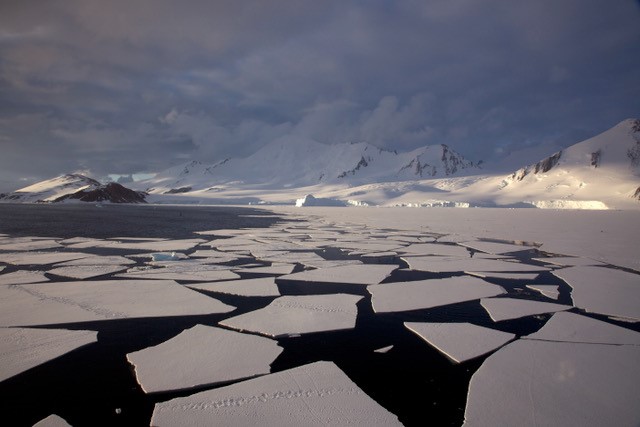UNSW led team awarded a UK-Australia SpaceBridge grant to study Antarctic sea ice
TheÌıIceCubeÌıproject will partner with the space industry and UNSWâs Data Science Hub to monitor Antarctic sea ice in a changing climate.Ìı
TheÌıIceCubeÌıproject will partner with the space industry and UNSWâs Data Science Hub to monitor Antarctic sea ice in a changing climate.Ìı

A UNSW School of Mathematics and Statistics scientist will leadÌıan industry partnership which will use artificial intelligence and dozens of small commercial satellites to study Antarctic sea ice.
Dr Shane Keating, a senior lecturer in oceanography and fluid dynamics, will lead the IceCube: Monitoring Antarctic sea-ice with small satellites project, which will strive to provide critical insights into Antarctic sea ice change to enable enhanced climate forecasting and modelling.
It is one of fiveÌıcollaborative research projectsÌıwhich has attracted funding under the UK-Australia Space Bridge framework.Ìı
TheÌıprogram seeksÌıto developÌıcollaborations between the United Kingdom and AustraliaÌıto strengthen ties betweenÌıtheir respective space industries and governments.
The Space Bridge program, managed and led byÌı, is supported by Austrade, the Australian Space Agency, the UK Government and the UKÌıSpace Agency.Ìı
The selected projects, which will share $500,000 in funding, were asked to explore and advance satellite technologies while addressing areas identified as strategically beneficial to the mutual interests of each country.
Research groupsÌıare required to engage partners from both the UK and Australia,Ìıand at least one industry partner.Ìı
The IceCube team has linked up with industry partner Spire Global UK, which operates the worldâs second largest constellation of commercial cubesats [small satellites] which are utilised for maritime information, logistics, weather forecasts, and other commercial applications.Ìı
Other partners include the British Antarctic Survey, the Australian Antarctic Program Partnership [AAPP], and the ARC Centre of Excellence in Antarctic Studies.
University partners are UNSW and its newÌıÌı[uDASH], and the University of Tasmania.
The IceCube team is comprised of Lead Chief Investigator Dr Shane Keating [UNSW Mathematics and Statistics, uDASH and ARC Centre of Excellence in Antarctic Studies]; Steefan Contractor [uDASH]; Jessica Cartwright [Spire Global UK]; Alex Fraser and Petra Heil [both of University of Tasmania and AAPP]; and Jeremy Wilkinson [British Antarctic Survey].Ìı
Dr Keating says that this collaboration between the Australian and UK space and polar research communities âwill contribute to future Antarctic research voyages by the RRV Sir David Attenborough [BAS] and RSV Nuyina [AAPP] that provide ideal opportunities to validate our ice classification products at seaâ.Ìı
He believes that the project will have an important impact on the future of climate change research.
âSea ice is a âcorner pieceâ of the climate-change jigsaw, where atmosphere, ocean, and ice processes are most closely linked, and understanding sea ice responses to warming is critical for long-term climate predictability,â Dr Keating said.
âHowever, the drivers of Antarctic sea ice change are poorly understoodÌıand not well-represented in climate models.
âDetailed observations of sea ice are therefore crucial for developing improved models of sea ice processes and their global impact.â
The IceCube project will make innovative use of GPS signalsÌıâÌıthe same technology that allowsÌıyour mobile phone to pinpoint your location.
GPS satellites constantly orbit the Earth, transmitting signals that can be tracked by phone.
When these signals bounce off the Earthâs surface, they collect identifying information about the reflecting surfaceÌıâÌıfor example, whether it is ice or water.
This information can be captured by small satellites to measure sea ice from space.Ìı
The five chosen projects are the first significant research activities under the Space Bridge Arrangement.
They must be completed by 30 June 2022 and were selected on their potential for larger future collaborative research projects which will grow industry capacity, provide an innovative end-product or capability, and build upon the respective space ecosystems of each country.ÌıÌı
High Commissioner of the UK to Australia, Victoria Treadell, praised the quality of the projects.
âI congratulate all who took part and particularly the selected projects which were of an extremely high calibre. This is a concrete example of our shared focus and investment in scientific innovation.â
Ìı